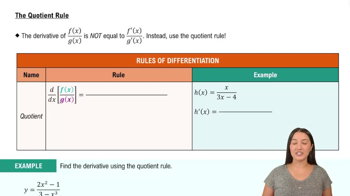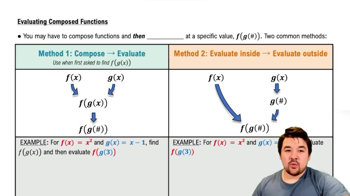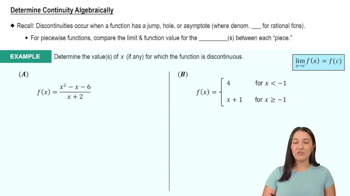{Use of Tech} Polynomial calculations
Find a polynomial ƒ that satisfies the following properties. (Hint: Determine the degree of ƒ; then substitute a polynomial of that degree and solve for its coefficients.)
ƒ(ƒ(x)) = x⁴ - 12x² + 30
 Verified step by step guidance
Verified step by step guidance Verified video answer for a similar problem:
Verified video answer for a similar problem:



 5:56m
5:56mMaster Adding & Subtracting Functions with a bite sized video explanation from Patrick
Start learning